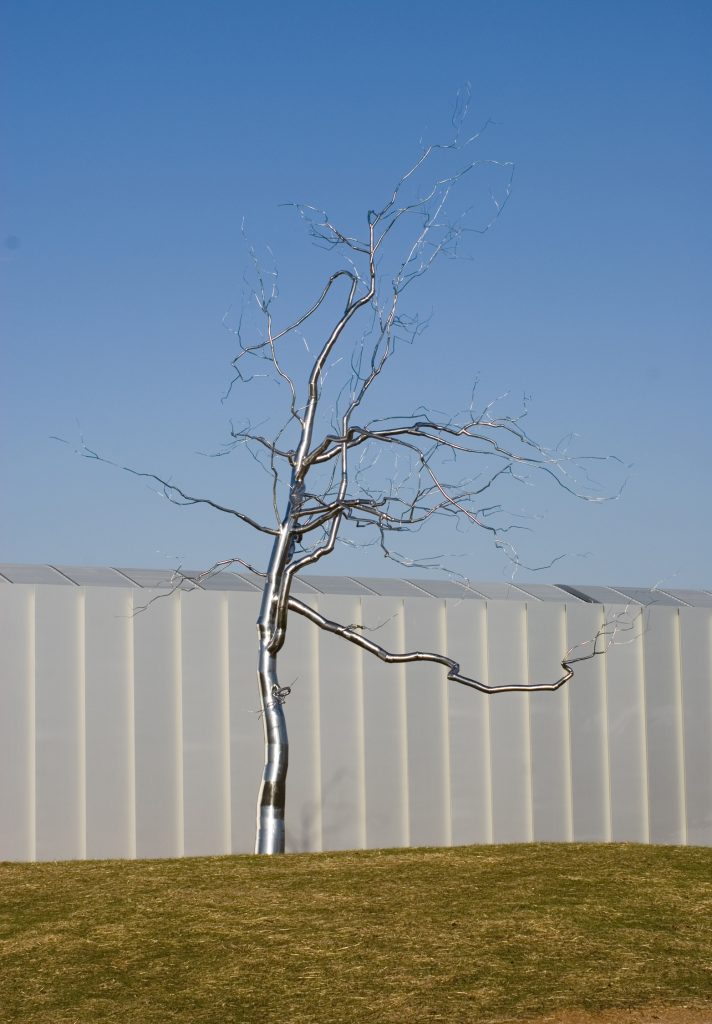Roxy Paine (artist)
Paine’s works focus on the place of nature in contemporary culture and can provoke thoughts about...
ver artistaLos alumnos examinarán los árboles y crearán esculturas de papel de aluminio de árboles que puedan sostenerse por sí mismos.

Askew, by Roxy Paine
Introducción/ Calentamiento
Procedimiento de la actividad de enfoque
Cerrar
Escrito por Andrea Saenz Williams
Vocabulario
tinfoil
Materiales
Tinfoil
small branches (collected from outside)
3” florist foam or other foam, marker
Actividades de extensión para profesores
Actividades de extensión para las familias
Suggested Books for the Classroom Library
Luxbacher, Irene. 1 2 3 I Can Sculpt! Kids Can Press, 2007. [ISBN 973-1-55453-038-0]
Raczka, Bob. 3-D ABC: A Sculptural Alphabet. Millbrook, 2007. [ISBN 978-0-7613-9456-3]
Thomas, Isabel. Sculpting. Heinemann Library, 2005. [ISBN 978-1-40346-921-2]
Thomas, Isabel. Sculptures. Heinemann Library, 2012. [ISBN 978-1-43295-017-0]
Wallace, Nancy Elizabeth., and Linda K. Friedlander. Look! Look! Look! At Sculpture. Marshall Cavendish, 2012. [ISBN 978-0-7614-6132-6]
Paine’s works focus on the place of nature in contemporary culture and can provoke thoughts about...
ver artista